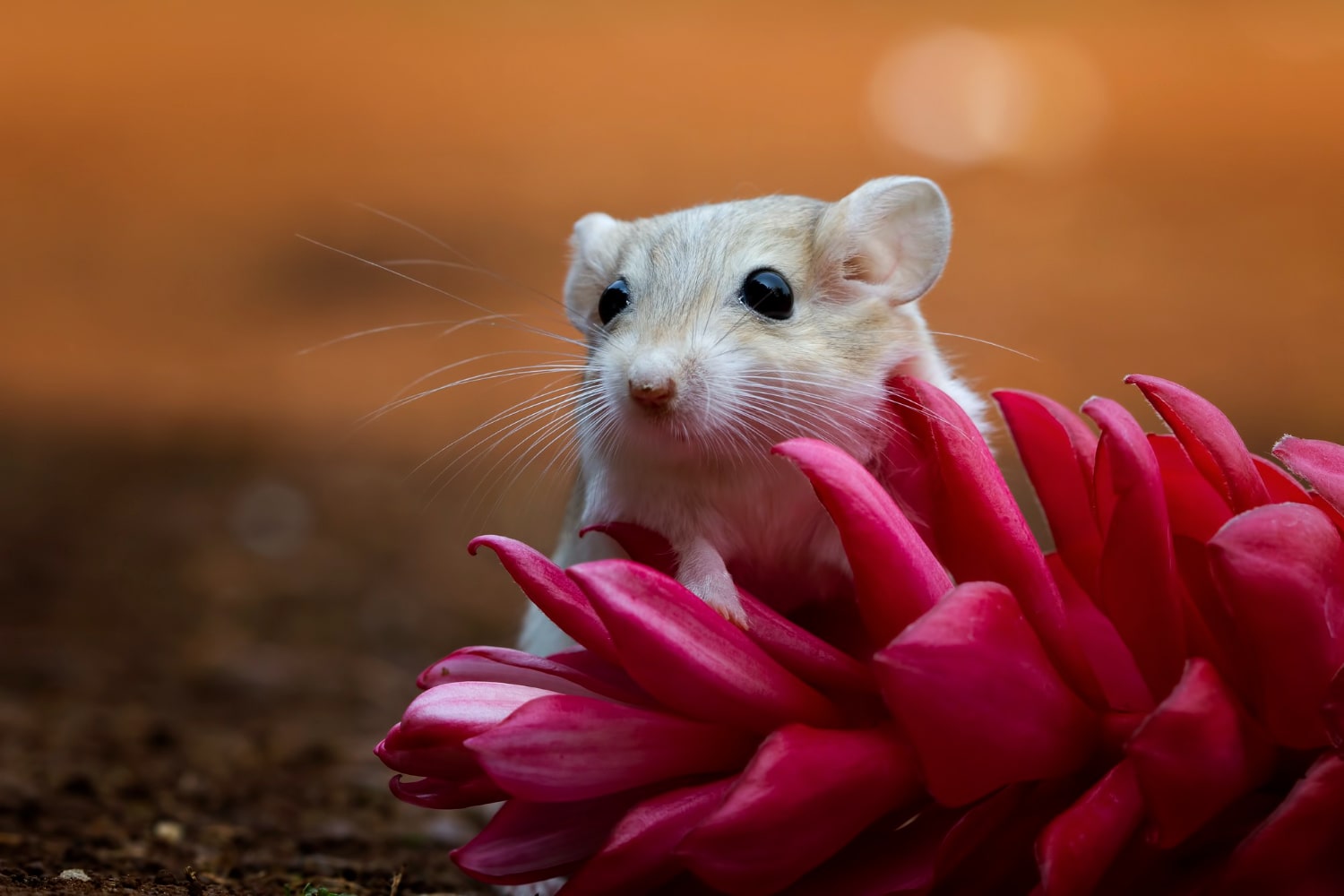Mice are among the most widespread mammals on Earth and can be found on nearly every continent. They have accompanied humans for thousands of years, showing remarkable adaptability to various environments. Thanks to their resilience, intelligence, and rapid reproduction, mice have become essential subjects in scientific research, cultural symbols, and even cartoon characters. However, these small creatures are far more complex than they may seem at first glance. Here is a collection of interesting facts about mice you might not have known.
- Mice have an exceptionally well-developed sense of smell that allows them to detect food from a great distance. They can recognize relatives by scent and avoid dangerous territories. This is why mice are sometimes used in scientific research related to olfaction.
- Their vision is weak, but they navigate well in darkness using touch and their whiskers. These whiskers, called vibrissae, detect the slightest air movements and help them avoid obstacles. In the wild, mice rely on this sense to survive.
- Mice can jump up to 30 centimeters high, several times the length of their bodies. They use this ability to escape predators or reach hidden food. Their strong hind legs make them natural jumpers.
- They can squeeze through holes much smaller than their bodies due to their flexible skeletons. Mice can flatten themselves to fit through gaps as narrow as a pencil. This makes them excellent at entering hidden areas.
- A mouse’s pregnancy lasts only about three weeks, and a litter can include up to 14 babies. In favorable conditions, mice can reproduce at a very fast rate. A single pair can produce hundreds of offspring in one year.
- Mice live in complex social structures with a clear hierarchy. Each group has dominant individuals who control access to food and territory. They also use high-frequency vocalizations that are often inaudible to humans.
- Mice have learning and memory abilities that help them remember routes to food or shelter. In laboratory conditions, they perform well in mazes and problem-solving tasks. Their brains are widely used in neuroscience research.
- They have very fast metabolism and must eat frequently to replenish their energy. Mice prefer grains, nuts, and fruits but can also consume protein. Sometimes their food stores contain a variety of items found in human homes.
- Some mouse species live exclusively in trees or mountains and have little contact with humans. For example, forest mice build nests high above the ground. Their lifestyle is very different from that of domestic mice.
- Mice can carry many pathogens, including salmonella, leptospirosis, and hantaviruses. In urban areas, controlling mouse populations is an important public health measure. In nature, however, they play a key role in food chains.
- In science, mice are one of the most important model organisms. Due to the genetic similarities between mice and humans, they are used to study cancer, genetic disorders, and vaccine development. They play a critical role in medical research.
- Male mice can produce ultrasonic songs to attract females. These sounds are complex, and each male has his own unique pattern. Although humans cannot hear them, special devices can detect these sounds.
- In the wild, mice typically live for one to two years due to predators and harsh conditions. In captivity or laboratories, they can live up to three years or longer. These environments provide them with protection and regular food.
- While many people see mice as pests, in some cultures they have symbolic meaning. In the Chinese zodiac, the mouse represents intelligence, cleverness, and entrepreneurship. Mice also appear frequently in myths and fairy tales.
- Mice have highly sensitive hearing and can detect ultrasonic sounds beyond the range of human hearing. This helps them avoid danger and navigate their surroundings. In nature, this is vital for their survival.
- Their front paws are very nimble and allow them to handle food with precision. Mice can grasp seeds or crumbs similarly to how humans use fingers. This gives them an advantage in collecting and eating food.
- Mice can survive for several days without drinking water by getting moisture from food or through metabolic processes. This makes them well-suited to dry environments. In deserts, they are often active only at night to avoid heat.
- They adapt quickly to environmental changes, such as new food sources or threats. Mice can change their routes, habitats, or even feeding habits. This adaptability makes them incredibly resilient.
- Their teeth grow continuously throughout life, so they must constantly gnaw to keep them from becoming too long. That is why they chew on wood, plastic, wires, and other hard materials. This behavior is instinctive, not aggressive.
These fascinating and educational facts about mice provide a deeper understanding of these tiny creatures. They surprise us with their anatomy, behavior, and ability to thrive in diverse conditions. Mice play an important role in both ecosystems and scientific research. Their presence reminds us that even the smallest beings can have great significance.





